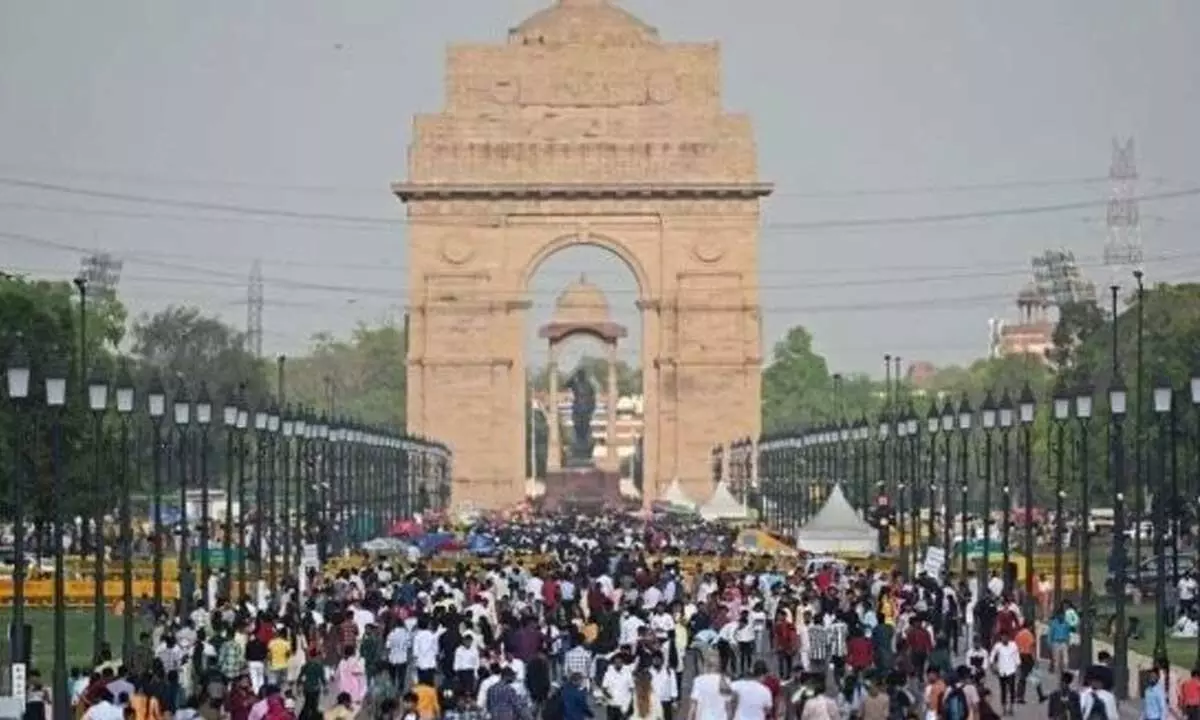Most populous nation: Should India rejoice or panic?

Most populous nation: Should India rejoice or panic?
The United Nations Funds for Population Activities (UNFPA), ‘State of the World Population Report 2023’ pegs India’s mid-year population at 142.86 crore surpassing China by 29 lakhs
The United Nations Funds for Population Activities (UNFPA), ‘State of the World Population Report 2023’ pegs India’s mid-year population at 142.86 crore surpassing China by 29 lakhs. The report says that in the absence of the 2021 Indian census, India in recent years has been adding about 1.6 crore annually to its population, it has either already crept ahead or would do so by June end. There has been continuous population growth in India and depopulation in China, this means that India is now assuming throne as the most populous country. From population size alone, not much can be inferred about India’s future, but looking at the demographic dynamics, the country needs to move quickly to utilize most of the working-age people and maximize the country’s opportunity for accelerated economic growth.
The question arises, what could be the opportunities and costs from being the most populous country? Population control is widely being seen as a panacea to avoid a grim future. But there is need to look deeper into the issue from an empirical and scientific perspective. The major issue is, therefore, whether it is dividend or disaster? As such demographic dividend is the economic growth potential that can result from shifts in population’s age structure, mainly when the share of working-age population (15-64 years) is larger than the non-working share (14 & younger and 65 & older) of the population.
In this context, let us look at the demographic dividend in India. Whether the population is a resource or burden depends on population growth, size and composition. India has one of the youngest population in an ageing world. Since 2018, India’s working-age population has grown larger than the dependent population. This bulge in working-age population is going to last till 2055.
According to UNFPA recent report, India’s age composition of the population is: 0-14 years -25 percent, 15-64 years -68 percent and above 65 years - 7 percent. This transition happens largely because of decrease in India’s Total Fertility Rate (TFR) - it is, children likely to be born to a woman in her childbearing age, which is at present 2.0. That means on an average two children are replacing parents, an ideal condition for population stabilization. The window of demographic dividend opportunity in India is available till 2055-56, larger than any other country in the world. But this window is available at different times in different states, because of differential behaviour of the population parameters like southern states which are advanced in demographic transition, already have higher percentage of older people.
As per official population estimates, after a decade or so from nowthere will be generational divide between India’s North and South. As the developed southern states age rapidly, the average Tamil man will be about 10 years older than the average Bihari man. Meanwhile, as fertility falls slowly in North, average Bihari woman will have more children than woman from Kerala did 40 years earlier. As per new census indicators, over one-third of the total increase in the India’s population between 2011-2036 will come from two states - Uttar Pradesh and Bihar, while all the southern states will see their share in the population declining. Further Tamil Nadu will be the oldest state by 2036 with median age of 40 and Bihar will be the youngest with median age under 30. The median Indian will be 34.7 years in 2036.
It is known that high population makes it difficult to reduce poverty and diminish inequality. Yet, if we look at it in a progressive aspect, more Indians would mean more production, consumption and higher growth. Many studies have shown that the economic growth, historically and even recently, is largely attributable to demographic dividend.
Therefore it is necessary to know as to how to tap the country’s demographic dividend window into economic dividend: the important aspects to translate demographic dividend to economic growth are; to generate sufficient employment, investment in education and skill development, thrust on a healthy society to name few. Presently India’s GDP is above three trilliondollars but it has not generated sufficient employment. Therefore it is necessary to generate sufficient quality jobs for its bulging working-age population, to improve quality of life of the people. There is need for proper education, skill development and disease free healthy life to the working-age population in particular and whole population in general to translate demographic opportunity into economic gains. There is also need for good governance and collaboration between center and states for accelerated manufacturing activities and to harness the full potential of country’sworking-age population. The country has a substantial demographic bonus of having large working-age population atleast for next three decades or so. Therefore the country has an opportunity to emerge as a global production and consumption market with relatively lesser production costs due to lower labour costs.
Over 80 countries worldwide suffer from shrinking and ageing population due to low fertility and over 50 countries have encouraged the couples to have more children, for example, Japan, South Korea, China, the United States of America and other major economies. But this has proved ineffective. Because once fertility tends to decline, it is hard to reverse it. China, which became factory of the world, made this achievement due to its significant population of young people. But now it is looking at an ageing population which would not be able to support its enormous manufacturing activities. Because China followed one child policy for three-and-a -half-decades, it led to rising elderly people, then it relaxed to two children in 2016 and in 2021 to three children. According to the United Nations by end of the century Chinese population is expected to shrink by 45 percent, provided it maintains current fertility rate of 1.3 children per couple.
If India’s total fertility rate becomes less than 1.8, though higher than that of 1.3 of China, but it will not be economically advantageous. In such a scenario population control measures will lead to ageing population and may result in country getting old before getting rich. But India at present is in a better position with 2.0 fertility rate and having remarkable working-age population. The greater share in working-age population has potential to become world market for production, consumption with lower manufacturing costs due to cheaper workforce and to substantially boost per capita GDP.
There is need for policy intervention to provide quality education, good healthcare, better employment so as to reap demographic dividend and achieve faster economic growth. If the country fails in these aspects demographic dividend may become demographic disaster.
(The author is a retired IFS officer)

















